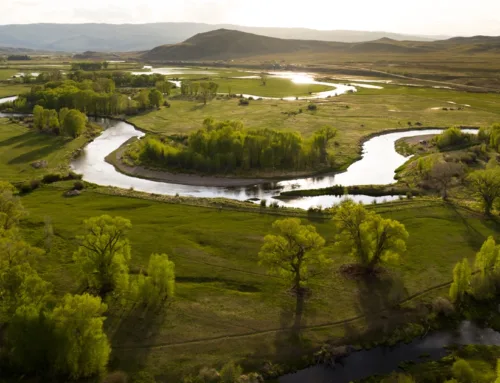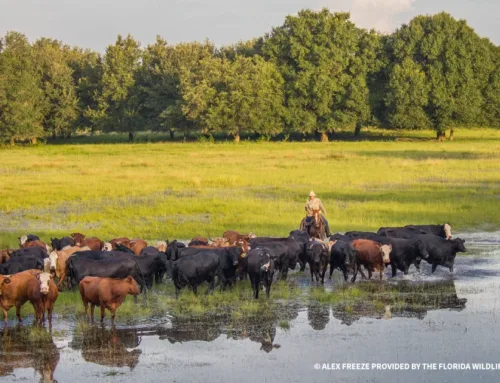2023 Timberland Deal of the Year Deep River Woods
2023 Timberland Deal of the Year Deep River Woods
By Cary Estes

LR_DoY_2024_Timberland-01
STRATEGIC SETTING. These highly productive Washington timberlands are located in close proximity to a major timber export terminal at the mouth of the Columbia River.
When word began to circulate in 2023 that Deep River Woods, more than 20,000 acres of highly productive timberland in the southwest corner of Washington state, was coming to market, officials in Wahkiakum County expressed a desire for the state of Washington to buy the property and stave off fragmentation and development.
Alas, with an estimated purchase price expected to be well in excess of $100 million, county officials figured the property — known as Deep River Woods — was too expensive for the Washington State Department of Natural Resources, which had recently received $70 million in legislative funding.
What those same county officials didn’t know was that the Department of Natural Resources was working behind the scenes with The Conservation Fund to craft a deal in which each entity would purchase part of the property. The ultimate goal would be for the state to acquire The Conservation Fund’s share.
On December 19, Wahkiakum County officials received an early Christmas gift when it was announced that the Department of Natural Resources and The Conservation Fund had partnered to acquire all 20,505 acres from Manulife Investment Management for $121 million. The transaction ranks as the state’s largest land acquisition in more than a decade.
The Department of Natural Resources paid $55 million for 9,115 acres, and The Conservation Fund purchased the remaining 11,390 acres for $66 million. Given the complexity of this partnership, The Land Report has named the Deep River Woods transaction the 2023 Timberland Deal of the Year.
“For us, this was a perfect purchase because it’s great growing ground for logging, and it’s adjacent to forestland that we already own and manage,” says Department of Natural Resources Assistant Deputy Supervisor Duane Emmons. “But we knew we couldn’t afford to submit a bid on our own. So having The Conservation Fund as a partner was an incredible opportunity.”
Providing this level of bridge financing for public agencies is one of the primary functions of The Conservation Fund. CEO Larry Selzer describes the organization as “an investment bank for conservation.” Still, despite being well versed in such transactions, Selzer says that Deep River Woods was a daunting task and among the largest deals The Conservation Fund has financed in the organization’s nearly 40-year history.
“To put $66 million into a single purchase, that’s a big transaction,” Selzer says. “Then there was the structure of the deal: two separate purchase-and-sale agreements with two contracts. If you’re a seller, having two buyers represents a risk element that you have to come to terms with. But The Conservation Fund has a long and very positive history with Manulife, and that gave them comfort as this transaction went through.”
Another key factor was The Conservation Fund’s ties to LandVest, which represented Manulife. LandVest has facilitated some of the largest timberland transactions of the last half-century, including 23,000 acres of forestland in Alabama’s Red Hills to The Conservation Fund in 2023.
“The Conservation Fund has a consistent track record of closing on key transactions with our clients across North America,” says LandVest President and CEO Joseph Taggart. “Although a transaction with a state agency was unique, Larry and his team are proven performers. We work with them on two or three projects a year and knew they were the perfect partner with DNR.”
That said, The Conservation Fund demonstrated their commitment to Deep River Woods by shelling out a $1 million nonrefundable deposit to hold the property while the requisite officials at the state of Washington reviewed and signed off on the transaction.
One of the key reasons the buyers felt it was worth the risk was the economic impact of the property. Located near the mouth of the Columbia River just west of a major timber export terminal, Deep River Woods is stocked with Douglas fir, western hemlock, and red alder. It not only provides employment opportunities for the local logging industry, but Emmons says revenue generated from state-operated land in the area can account for more than one-third of a county’s annual operating budget, especially for use in schools.
“That is an historically important area for timber production, with communities that have thrived for generations based on the forest-products industry,” Selzer says. “So keeping these lands as working forests was a critically important piece of this. This is not about protecting these lands from people.
It’s about protecting them for people.”
In addition to the economic value, Selzer says Deep River Woods also provides clean water and air, species biodiversity, and recreational opportunities. Many of those benefits would have been reduced or eliminated had the property been parceled off in tracts and used for residential or commercial development.
“Scale is important not just for economic value but also ecological value,” Selzer says. “Wildlife, water quality … all those things require bigger tracts of land in order to build resilience into the landscape. If we had not stepped in, it’s likely that this property would have been subdivided and sold off for nonforest uses. But by working with the state, we’ve ensured that this property will remain a large, intact working forest that will provide jobs and a tax base for these communities and also protect the wildlife, water quality, and the recreational opportunities.
“The future of conservation is about balancing economic return and environmental protection,” Selzer adds. Working forests are one of the best ways to achieve that balance, and the Deep River Woods project is one of the best case studies of that anywhere in America.”

RENEWABLE RESOURCE Revenues from state-owned timberlands will fund Washington schools for generations to come.






